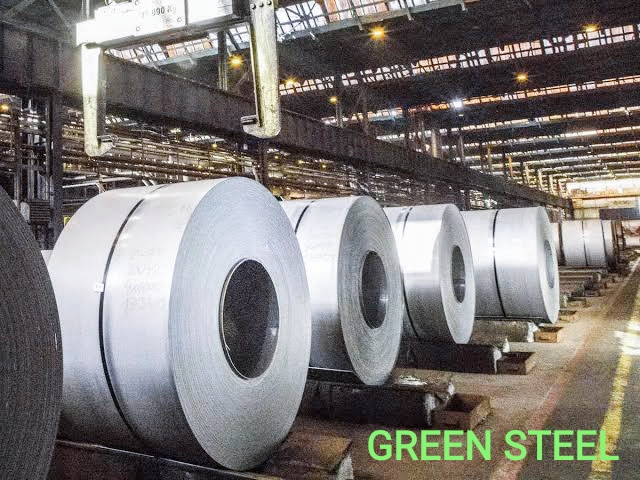Table of Contents
What is Green Steel?
Green Steel is an environmentally friendly steel produced with a reduced carbon footprint compared to traditional steelmaking processes.

This footprint reduction is achieved through the implementation of alternative non-coal based technologies. In most cases, green hydrogen is used to produce green steel instead of coal and electricity from fossil-free sources.
Green Steel Production Process
Green Steel Production involves the hydrogen-based direct reduction of iron ore. The first step in the production of chemical green steel is the reduction of solid iron ore with hydrogen. This creates an intermediate product called a “sponge iron”. This sponge iron is then fed into an electric arc furnace where the sponge iron is melted to produce steel. At Greenfield Steel Mills, most green steel production processes are fully integrated, digitized and automated.
The steel steel manufacturing process consists of the following steps:
- Electrolytic decomposition of water into hydrogen and oxygen. The
- iron ore is exposed to hydrogen in the reactor to produce directly reduced iron and the DRI is transported hot to the electric arc furnace. The
- Electric Arc Furnace heats DRI and steel scrap to produce a homogeneous liquid molten steel. The melt is then transferred to a ladle furnace and degassing unit where alloying additions are made to obtain the desired properties.
- In the next step, the molten steel is converted into solid crude steel products in a continuous casting and rolling process.
- In the final step, downstream refining is done using different treatment processes such as cold forming, galvanizing, heat treatment, etc. according to customer requirements.
Green Steel Challenges
Decarbonization of the entire steel industry is a major hurdle in addressing climate change. Conventional steel manufacturing accounts for about 7% of global greenhouse gas emissions. This is roughly equivalent to the annual emissions of all vehicles on the world’s roads. Again, you need steel to craft cars, so the effect stacks. That is why steel plays such a big role in climate change.
It is estimated that 1 tonne of steel produced by conventional methods releases about 2 tonnes of CO2 into the atmosphere and the world consumes more than 2 billion tonnes of steel each year. More than half of total emissions come from blast furnaces, where iron ore is converted into pig iron.
Reducing these carbon emissions in an economical way remains a major challenge and still requires improvements in various processes. Over the next few years, pressure from environmentalists to focus on green steel production will increase. Various research and development work is still underway, and large-scale production of raw steel will become a reality in the near future.
Conclusion
The steel industry is considered one of the dirtiest industries, accounting for over 7% of global CO2 emissions. To reduce the environmental impact of greenhouse gas emissions, an industry expert is now turning to sustainable steelmaking processes that could bring his CO2 emissions in the world close to zero.
Green Steel is an initiative to produce steel with the lowest possible carbon footprint during production. The raw steelmaking process is believed to reduce CO2 emissions by 95% compared to conventional steelmaking processes.
